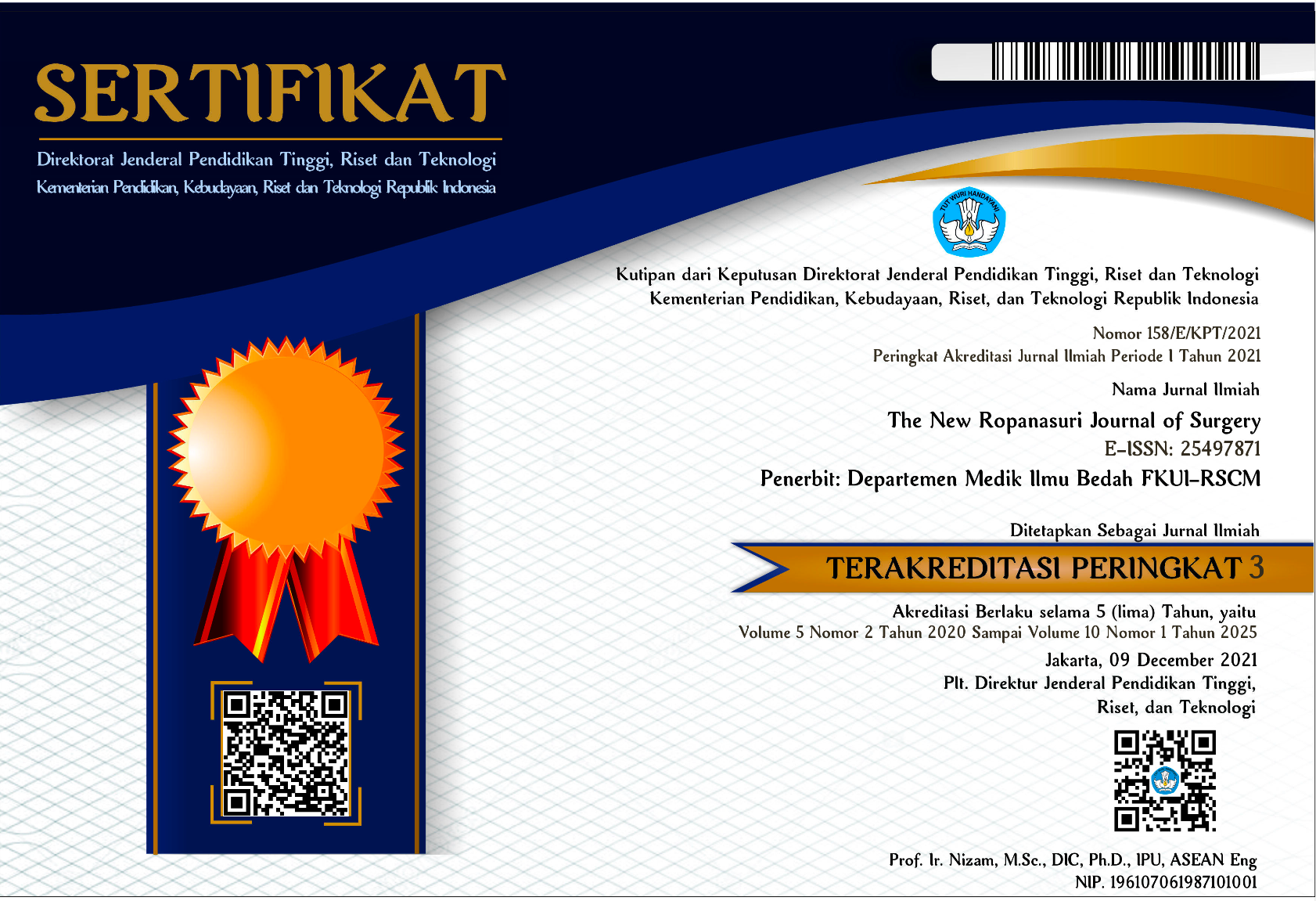Abstract
Introduction. Acute limb ischemia, a sudden decrease of perfusion to the extremities, can compromise the survival of the limbs. Medical intervention and surgery are often needed to return perfusion. However, reperfusion injury can trigger oxidative stress and inflammatory response, leading to local and remote tissue damage, such as the lungs, which increases morbidity and mortality. This research aims to study the effects of hypothermia and remote ischemic preconditioning (RIPC) on the lung parenchyma after being exposed to reperfusion after acute limb ischemia in rabbits.
Method. Eighteen New Zealand White rabbits were divided into three groups of 6. The femoral artery was ligated to induce ischemia. The hypothermia group was given cooling pads to maintain a temperature of 28°C for 4 hours, and the RIPC group was assigned RIPC before ligation for 5 minutes in three cycles. Both groups underwent reperfusion for eight hours. Evaluation of histologic characteristics was performed independently by a pathologist.
Results. The mean scores for the control group, hypothermia group, and RIPC group were 12.03 + 1.43 (severe injury), 8.03 + 3.03 (moderate injury), and 4.80 + 2.61 (mild injury), respectively. In addition, there was a significant difference between lung parenchymal damage in the control group and hypothermia group (p = 0.015) and between the control group and RIPC group (p = 0.000).
Conclusion. Both hypothermia and RIPC have a protective effect on lung parenchyma exposed to remote reperfusion injury after lower limb ischemia, where RIPC protects the lungs to a higher degree.
Recommended Citation
Hutagaol, David; Susanti, Dhama S.; Soeharto, Wuryantoro; Putra, Muhammad A.; Wardoyo, Suprayitno; Makdinata, William; and Setiawan, Moira
(2022)
"Effect of Ischemia-Reperfusion injury and Preconditioning on Lung Parenchyma after Acute Limb Ischemia,"
The New Ropanasuri Journal of Surgery: Vol. 7:
No.
1, Article 2.
DOI: 10.7454/nrjs.v7i1.1114
Available at:
https://scholarhub.ui.ac.id/nrjs/vol7/iss1/2













